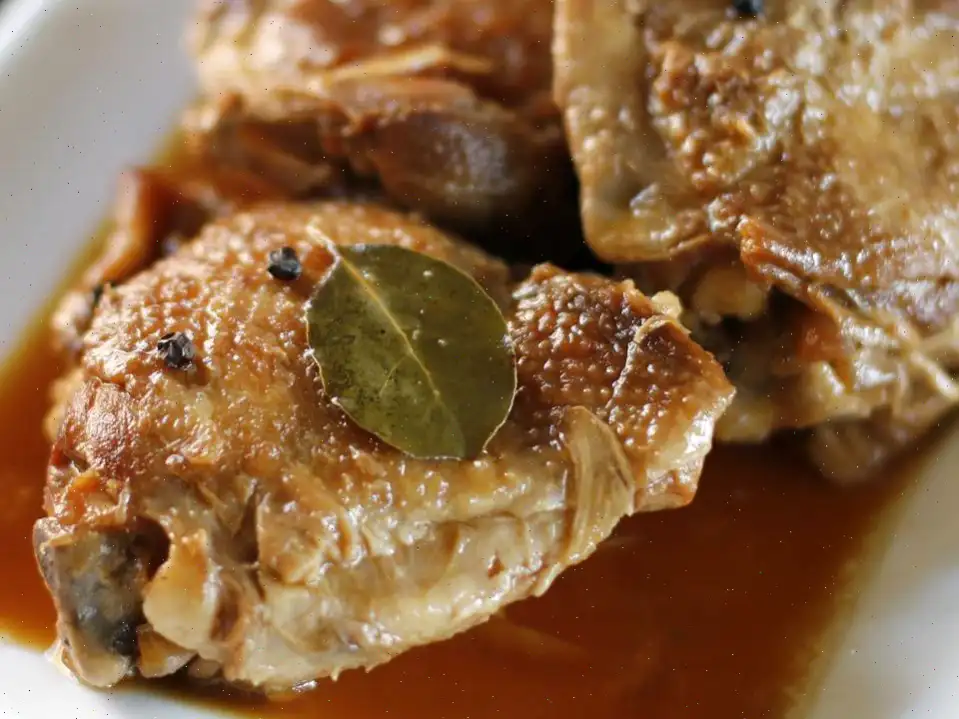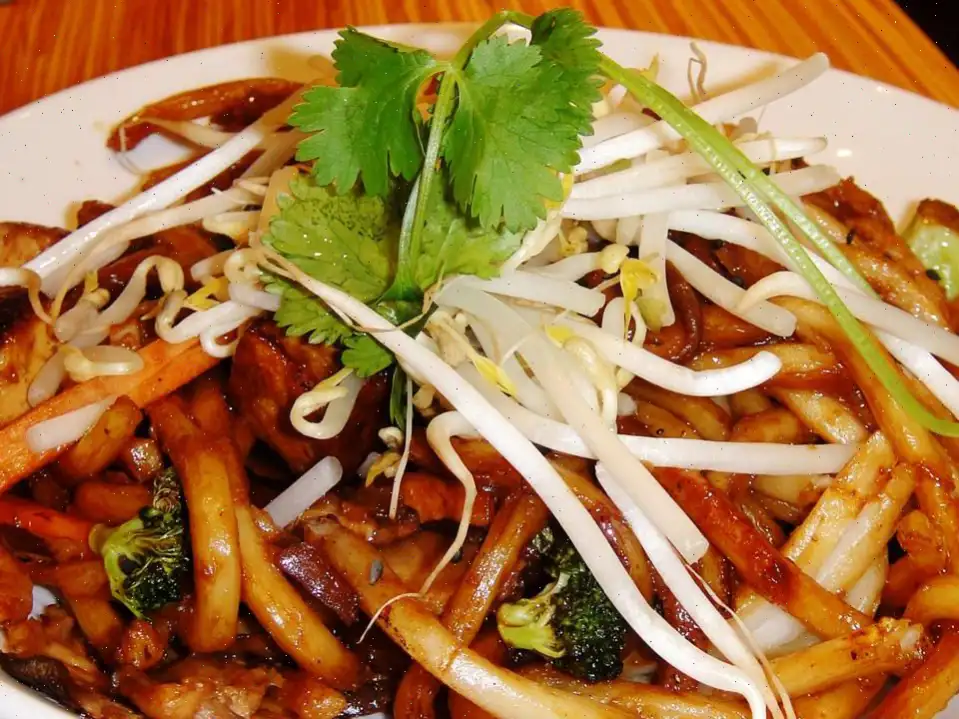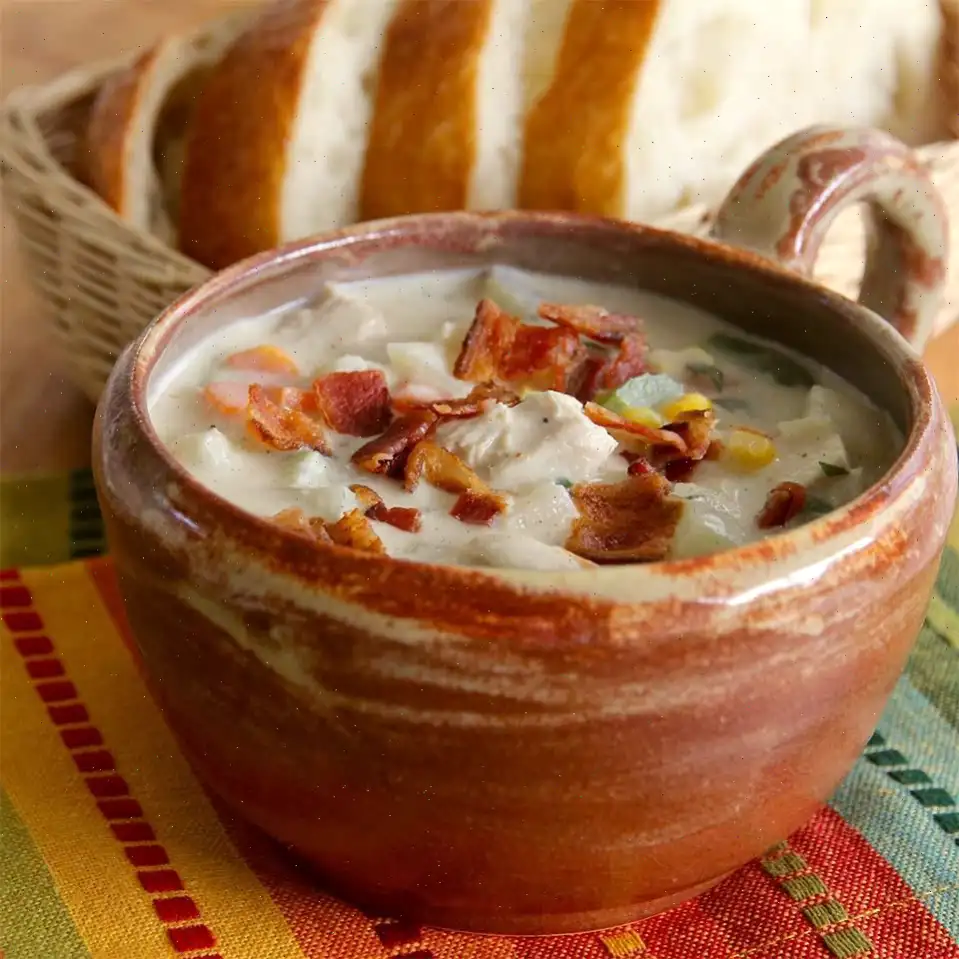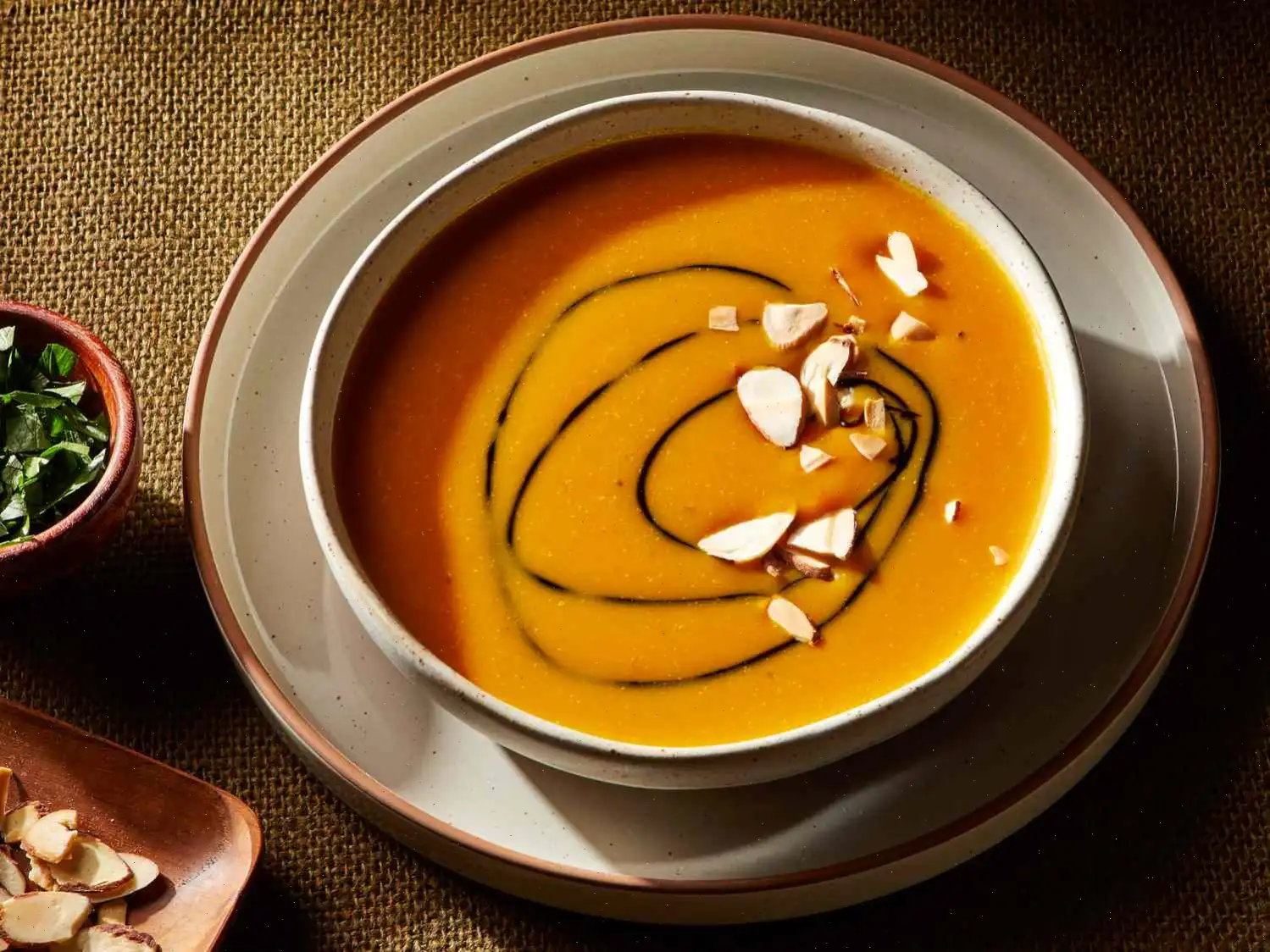
Lolah's Chicken Adobo Recipe
This simple yet flavorful dish features tender chicken thighs cooked in a savory mixture of soy sauce, apple cider vinegar, and spices, creating a rich and satisfying meal.
Ingredients
- 3 tablespoons vegetable oil
- 3 pounds boneless, skinless chicken thighs, rinsed and patted dry
- 6 cloves garlic, peeled and thinly sliced
- cup soy sauce
- cup apple cider vinegar
- cup water
- 2 tablespoons pickling spice, wrapped in cheesecloth
Directions
- Heat the vegetable oil in a large pot over medium heat until it shimmers.
- Add the sliced garlic and saut for no more than 30 seconds, until fragrant. Be careful not to brown the garlic.
- Add the chicken thighs to the pot, stirring frequently until the chicken turns white all over. Do not allow it to brown.
- Pour in the soy sauce, apple cider vinegar, and water. Add the wrapped pickling spice and ensure that the spice ball is fully submerged in the liquid.
- Bring the mixture to a boil, then reduce the heat to a simmer. Cover the pot with a lid, allowing some steam to escape.
- Simmer for about 1 hour, or until the chicken is tender and fully cooked through.
Nutrition Facts
Per serving (based on 8 servings)
- Calories: 265
- Total Fat: 12g (15% Daily Value)
- Saturated Fat: 3g (13% Daily Value)
- Cholesterol: 141mg (47% Daily Value)
- Sodium: 1050mg (46% Daily Value)
- Total Carbohydrates: 3g (1% Daily Value)
- Dietary Fiber: 0g (1% Daily Value)
- Total Sugars: 0g
- Protein: 35g (69% Daily Value)
- Vitamin C: 1mg (1% Daily Value)
- Calcium: 26mg (2% Daily Value)
- Iron: 2mg (12% Daily Value)
- Potassium: 448mg (10% Daily Value)
* Percent Daily Values are based on a 2,000-calorie diet. Your daily values may be higher or lower depending on your calorie needs. Consult a doctor or registered dietitian if you follow a medically restricted diet.

Origin and History
Adobo is a signature dish of Filipino cuisine, and its history is as rich as its flavor. The dish dates back to pre-colonial times, though its exact origin is a subject of debate. The word "adobo" comes from the Spanish term "adobar," meaning to marinate. When the Spanish colonized the Philippines in the 16th century, they introduced their method of preserving food using vinegar, soy sauce, and spices, which were later adopted and adapted by the Filipinos. The result is a dish that combines indigenous ingredients like vinegar, soy sauce, garlic, and peppercorns, creating a savory, tangy, and deeply flavorful meal.
Regional Variations
In the Philippines, adobo has many regional variations, each with its own unique twist. Some regions use pork, others prefer chicken, while others combine the two. The Bicol region, for example, often incorporates coconut milk to add a creamy richness to the dish, while the Ilocos region might add more vinegar or even soy sauce to intensify the flavor. This flexibility in preparation highlights the versatility of adobo, making it one of the most beloved and adaptable dishes in Filipino households.
Differences from Similar Dishes
While adobo is often compared to other stews or braised dishes, such as Mexican or Caribbean adobo, Filipino adobo stands apart due to its distinct balance of tanginess from vinegar and soy sauce, combined with the aromatic garlic and peppercorns. Unlike other versions that may rely heavily on spices like cumin or oregano, Filipino adobo is minimalist in its seasoning, allowing the simplicity of the ingredients to shine. Additionally, while many stews and braises use broth or stock, adobo is often cooked in its own liquid mixture, which is then reduced to create a flavorful sauce that coats the meat.
Where to Serve Adobo
Adobo is a staple in Filipino households and is often served during family gatherings, celebrations, and holidays. It is typically enjoyed as a main course, accompanied by steamed rice to soak up the savory sauce. While it is found in nearly every Filipino restaurant worldwide, it is also commonly prepared at home, where each family may have its own variation. Outside of the Philippines, Filipino restaurants in countries like the United States, Canada, and Australia often feature adobo on their menus, with some offering a choice of chicken, pork, or both. It's a dish that travels well and often tastes even better the next day, as the flavors have more time to meld together.
Interesting Facts About Adobo
- Adobo is considered the unofficial national dish of the Philippines.
- There are over 50 variations of adobo in the Philippines, with each province adding its own unique ingredients or techniques.
- In some regions, adobo is cooked with hard-boiled eggs, potatoes, or even pineapple to add depth and variety to the dish.
- It is said that adobo was originally created as a way to preserve meat for long periods, as the vinegar and soy sauce act as natural preservatives.
- Filipino adobo is often served with a side of atchara (pickled papaya) to balance the rich flavors of the dish.
FAQ about Lolah's Chicken Adobo Recipe
Comments
Nancy Brown
12/19/2022 01:11:07 AM
Excellent! The taste is spot on, but next time I'll try using slightly less soy sauce, maybe less than half a cup. My kids found the original Filipino "salty" flavor a bit too strong, unlike how my mother used to make it. Overall, fantastic!
Rachel Walker
03/07/2024 10:07:57 AM
Substitute 1/2 cup of sodium-free chicken broth instead of water. I also prefer using just 1/4 cup of vinegar.
Emily Mitchell
06/18/2024 01:23:41 PM
My mom also tried this recipe and added a tablespoon of flour to thicken the sauce. She also included grilled onions, diced celery, potatoes, carrots, and red/green peppers. It's a very versatile recipe and has become one of our favorite comfort foods, especially when served over rice.








